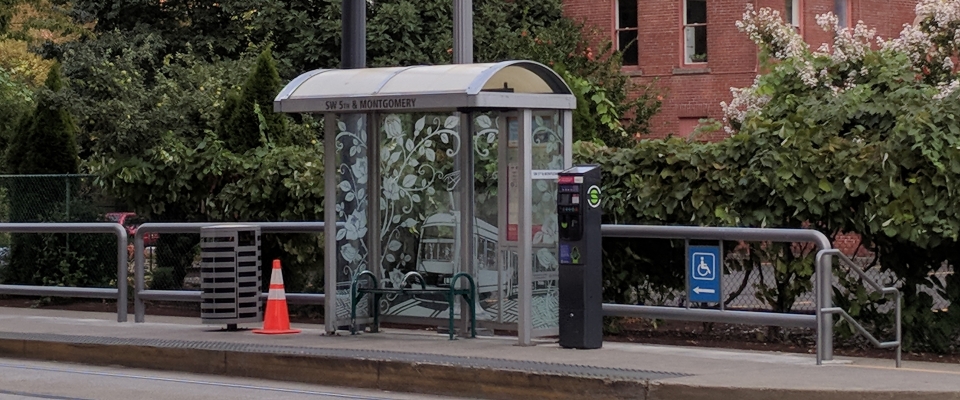Oregon’s "Green Rider": Targeting Communications to the Public Transit Swing Vote

The success of public transportation depends upon public understanding of, and support for, livability. In response to new Oregon state requirements to significantly reduce greenhouse gas (GHG) emissions from light-duty vehicles, a team of University of Oregon (UO) researchers reviewed public communication strategies around transit investments. The overarching conclusion? The most effective framing of public transportation benefits is not around climate change, but rather on livability. Communication should focus on the benefits to people's pocketbooks, choices, health, and community. While this shift in approach has been marginally applied in Portland, a large gap in connecting with residents’ transit concerns persists. This project, led by Autumn Shafer and Deborah Morrison of UO, offers a platform for understanding the relationship between livability and transit.
Shafer and Morrison, along with UO's Rebecca Lewis and Hannah Lewman, conducted a review of literature and past strategic communication efforts to gain an understanding of how livability, especially in relation to transportation, is conceived of and applied. They also conducted surveys of non-transit riders in 10 selected metropolitan areas across the country, to better understand their relevant perspectives on livability and transit. Lastly, an undergraduate student team, part of the award-winning advertising program at the University of Oregon School of Journalism and Communication, conducted brief intercept conversations, gathered observational data from Portland and engaged in a creative assessment to develop messaging recommendations.
Key findings from intercept conversations and the creative process:
- The team’s audience descriptions go beyond the usual binary of describing riders as either “captive” or “choice” to include an emerging category of rider: The Green Rider. The team identified this type of rider as a crucial player in creating a long-term culture of ridership among people who have the ability to drive. Additionally, the research team identified reaching and expanding the base of Green Riders to build ridership and investment in transit policies as a key objective of strategic communication efforts from transit agencies.
- Creative direction recommended stories of heroism, underscoring belief systems and narratives of self-efficacy and use of local characters to engage the Green Rider.
Key findings from the non-rider surveys:
- Non-riders are, generally, already supportive of public transit.
- For non-riders, employment opportunities, affordable housing, and protection from crime are of top importance. Transportation system planners and communicators should seek to draw connections among priority livability issues and public transportation.
- Non-riders recognize the positive aspects of public transportation as cutting down on traffic, being good for the environment and being efficient. Non-riders also tend to believe that public transportation is designed more for other people’s needs than their own.
- The majority of non-riders think their lives would be mostly unaffected by reductions or increases in transit funding. Transportation communicators should take advantage of a supportive, non-riding public to highlight the benefits of transit funding and make these issues more salient to non-riders.
These key findings and others are presented in the final report, and include a toolkit of several testable recommendations for campaign targeting and messaging. This research stands to help communications and transportation professionals better understand public perceptions of transit and livability, and create strategic communication that can shift attitudes toward public transportation and, ultimately, change public behavior.
This research was funded by the National Institute for Transportation and Communities, with additional support from the University of Oregon and the City of Portland, Oregon.
RELATED RESEARCH
To learn more about this and other NITC research, sign up for our monthly research newsletter.
- The Contribution of Transportation and Land Use to Citizen Perceptions of Livability in Oregon MPOs
- Measuring the Impacts of Social Media on Advancing Public Transit
- Changing attitudes toward sustainable transportation: The impact of meta-arguments
The National Institute for Transportation and Communities (NITC), one of five U.S. Department of Transportation national university transportation centers, is a program of the Transportation Research and Education Center (TREC) at Portland State University. The NITC program is a Portland State-led partnership with the University of Oregon, Oregon Institute of Technology, University of Utah and new partners University of Arizona and University of Texas at Arlington. We pursue our theme — improving mobility of people and goods to build strong communities — through research, education and technology transfer.
